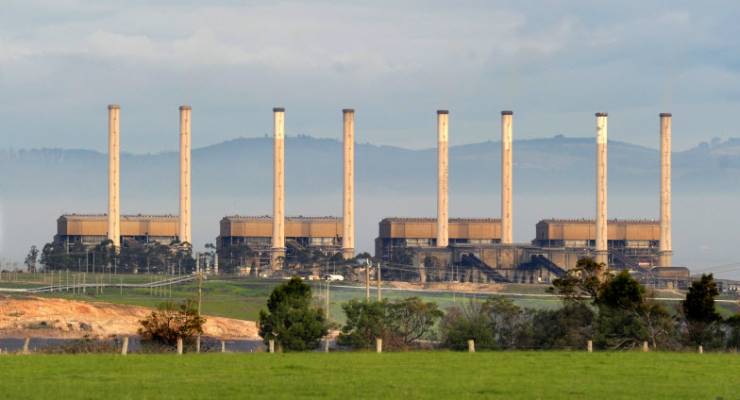
Former prime minister Tony Abbott’s last-minute intervention to argue against the shutting down of the Hazelwood power plant defies the realities of the closure of the coal-fired station.
Hazelwood’s long-planned closure begins next Monday, as boilers in the plant begin to be shut down. It comes in the middle of a huge fight between industry, and federal and state governments over energy supply. Hazelwood, in Gippsland’s Latrobe Valley, supplies up to 22% of Victoria’s energy and 5% of the country’s power. There are concerns from industry groups and some federal politicians that the shutdown of Hazelwood will lead to energy shortages in Victoria.
In an opinion piece in the Herald Sun today, the former prime minister called for the federal government to fork out millions in taxpayers’ money to keep Hazelwood open until “equally cost-effective and reliable alternative supplies can be established”.
“Keeping Hazelwood open would be a good way for Prime Minister Malcolm Turnbull to show that energy policy in Australia won’t be hijacked by ideological fixations in France.”
Abbott claimed that one of the factors in the closure was the French government utility ENGIE — part owner of Hazelwood — wanting to close down dirty power stations.
This claim was denied by ENGIE Australia CEO Alex Keisser on ABC’s RN Breakfast this morning.
“It’s absolutely not related to ENGIE getting out of coal generation,” he said.
“The decision to take the plant out was purely linked to a commercial decision … We’ve looked at all the technical alternatives, and we came to this decision.”
Keisser said many millions of dollars would need to be invested in Hazelwood — which was initially built in the late 1960s and early 1970s — to keep the plant safe. It has been estimated up to $400 million would be needed, but Keisser said neither the Victorian government or Federal government had approached the company about investing to keep the plant open.
“We would need to act very quickly. We would need at least $150 million to do the work required by July to keep the plant safe,” Keisser said.
Hazelwood’s safety issues have been well-known, and widely reported in recent months. If the power station remained open with government intervention, it would face a quick turnaround to replace equipment to meet requirements set by WorkSafe last year.
Keisser said that an intervention at this late a stage could not prevent the closure of the plant, and it was very difficult for the community and workers facing redundancy to have politicians intervening, and attempting to save it, at this late a stage.
Keisser says redundancies will commence at the end of this month, with 135 workers retained — 110 of those being contractors. Crikey understands that maintenance work which would have been done if the plant was running as normal hasn’t happened since the announcement in November of the planned shutdown. This means that a last minute intervention would require much more work around maintenance than simply just stopping switching off the boilers next week.
Abbott’s intervention did have one benefit for the government, however. It has forced the prime minister to change his rhetoric on Hazelwood. In question time on Monday, Turnbull said that the Victorian Labor government had “proceeded to allow the closure of Hazelwood”. On Friday morning, however, the prime minister admitted that the decision to close the plant was ultimately a commercial decision for the owner.
“The answer is that the Hazelwood closure is a commercial decision taken by its owner, ENGIE,” he said.
“It is one of the oldest — it is the oldest, in fact, in Australia. And it has been slated for closure for many, many years. The company has decided to close it because the cost of making it safe — the cost of paying for the long-deferred maintenance and to meet work safety requirements — runs into many hundreds of millions of dollars, even to keep it operating after June 30. So, that’s the reason for the commercial decision.”
The Australian Energy Market Operator (AEMO) stated today that neither the national nor Victorian energy systems would be compromised by the closure of Hazelwood. Because resources in both markets are not yet operating at their full capacity, AEMO has ensured there will be enough supply to exceed the 1600 megawatts capacity of Hazelwood.








Crikey is committed to hosting lively discussions. Help us keep the conversation useful, interesting and welcoming. We aim to publish comments quickly in the interest of promoting robust conversation, but we’re a small team and we deploy filters to protect against legal risk. Occasionally your comment may be held up while we review, but we’re working as fast as we can to keep the conversation rolling.
The Crikey comment section is members-only content. Please subscribe to leave a comment.
The Crikey comment section is members-only content. Please login to leave a comment.